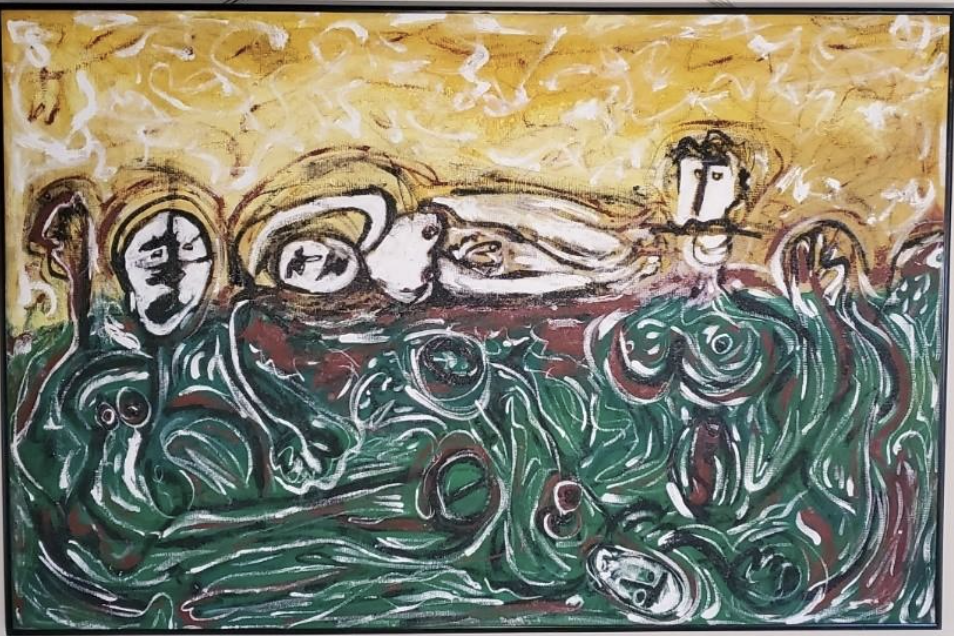Blue Sky, American, born 1938
Overflowing Parking, 1978 and 2019
Being considered one of the most iconic murals in Flint, “Overflowing Parking” was originally painted on the old Flint Journal building by Blue Sky in 1978. Sky was fascinated by the cars in Flint and the beauty of parking lots. He described cars as the jewels of the land, with “different color, sparkling in the sun.” Due to the fragile nature of the original surface, the mural started to peel off only a few years after being done. The restoration was done by Stephen Heddy, of Artistic Decorating, a Flint-local interior design company. The restoration stirred up an intense discussion around the city. People would come by to talk to Heddy about the restoration and express their impatience for this Flint icon to come back to life. Label by Yifei He




